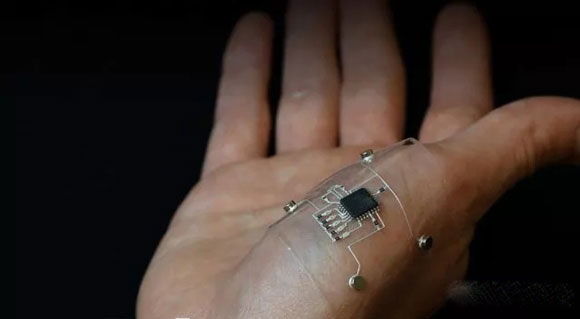[Chinese instrument network instrument research and development] Generally speaking, the traditional "intelligence, surveillance and reconnaissance" (ISR) sensors are always composed of bulky antennas and large boxes, and need to be fixed in place. Researchers at the United States Air Force Research Laboratory (AFRL) and Harvard University are seeking to reduce the size of sensors to Band-Aids, creating new possibilities for sensor and sensor application development.
The "hybrid 3D printing" technology utilizes additive manufacturing to bond a flexible conductive ink with a substrate to form a resilient electronic component.
For example, the electronic components of the sensor are digitally "printed" into sheet-like, flexible, stretchable elastic materials. The price of this sensor may be cheaper than traditional products, but the real significance is to break through the limitations of traditional sensors, significantly reducing the weight of the next-generation ISR. AFRL and researchers at Harvard University's Weiss Bioinspired Engineering Institute stated that they have developed methods to achieve this vision. Its technical details have been published in "Advanced Materials" magazine and are now being developed for practical applications.
The Air Force envisions this new type of sensor to have a range of potential uses. For example, a slim elastic strip can replace the large box sensor on the aircraft, saving space and payload. At the same time, they can also reduce the maintenance burden. For example, the maintenance around the tanker is very complicated. Several people need to remove the bladder from the aircraft to find loopholes. If a new flexible sensor is installed on the bladder, maintenance costs can be reduced and maintenance can be reduced. cycle.
Other services can also benefit from it. Researchers are investigating how new sensors can enhance infantry capabilities, such as using wearable electronics to sense fatigue and movement, by monitoring gait or observing how the arm bends, providing better physical fitness assessment, and deeper understanding of their physical capabilities and limitations. In addition, printed electronics can be used not only as sensors, but researchers are also exploring the use of flexible media printed circuits to generate electricity.
AFRL also coordinates the power of the business community through NextFlex, a public-private partnership. The alliance was established in 2015 and is a joint initiative of the United Nations defense, industry and academia to promote the development of flexible electronics. The organization stated that its purpose is to “create a compliant, scalable and intelligent product, thereby creating an era of 'Everything' and improving the efficiency of the world.†AFRL relevant official said that this will increase the level of manufacturing in the hybrid electronics field. . Because in addition to basic science, these capabilities need to be converted into equipment and product manufacturing capabilities. However, this change may take several years.
The AFRL team stated that 3D printing technology will complete the production of “printed†electronic components within one year, but there is still some material science work to be done in the development of elastic media. In their published research results, the researchers used a 3D printer to generate a conductive, silver-containing thermoplastic polyurethane, and then used a pick-and-place method to place the micro controller chip and LED lamp on a flexible substrate. This is the first time that 3D printers have printed flexible sensors with integrated microelectronic components. The printer has printed a complete flexible circuit from scratch, enabling the combination of printed components and off-the-shelf electronics. The final product will remain functional even if it is stretched beyond 30% of its original size.
(Original Title: U.S. Air Force Joint Harvard University Develops New Flexible "Band-aid" Sensors)
Leveling Foots
Leveling Foots
The main products are bakelite parts, Injection molded part, casting iron parts, zinc plated parts and other mechanical accessories.
Now our company has established a high reputation for providing good quality products at competitive prices. We have been paying attention to advanced management, professional working teams and integrated production facilities.
As a result of high quality products and outstanding service, we have gain a global sales network reaching Australia, Russia, Japan, the UK, Germany, America and so on. Many customers give us good evaluation.We have established long-term business relationships with many domestically famous companies
Leveling Foots,Leveling Feet,Nylon Leveling Feet,Adjustable Leveling Feet
Hebei Baisite Machinery Accessories Co.,Ltd , https://www.jiaomujian.com
